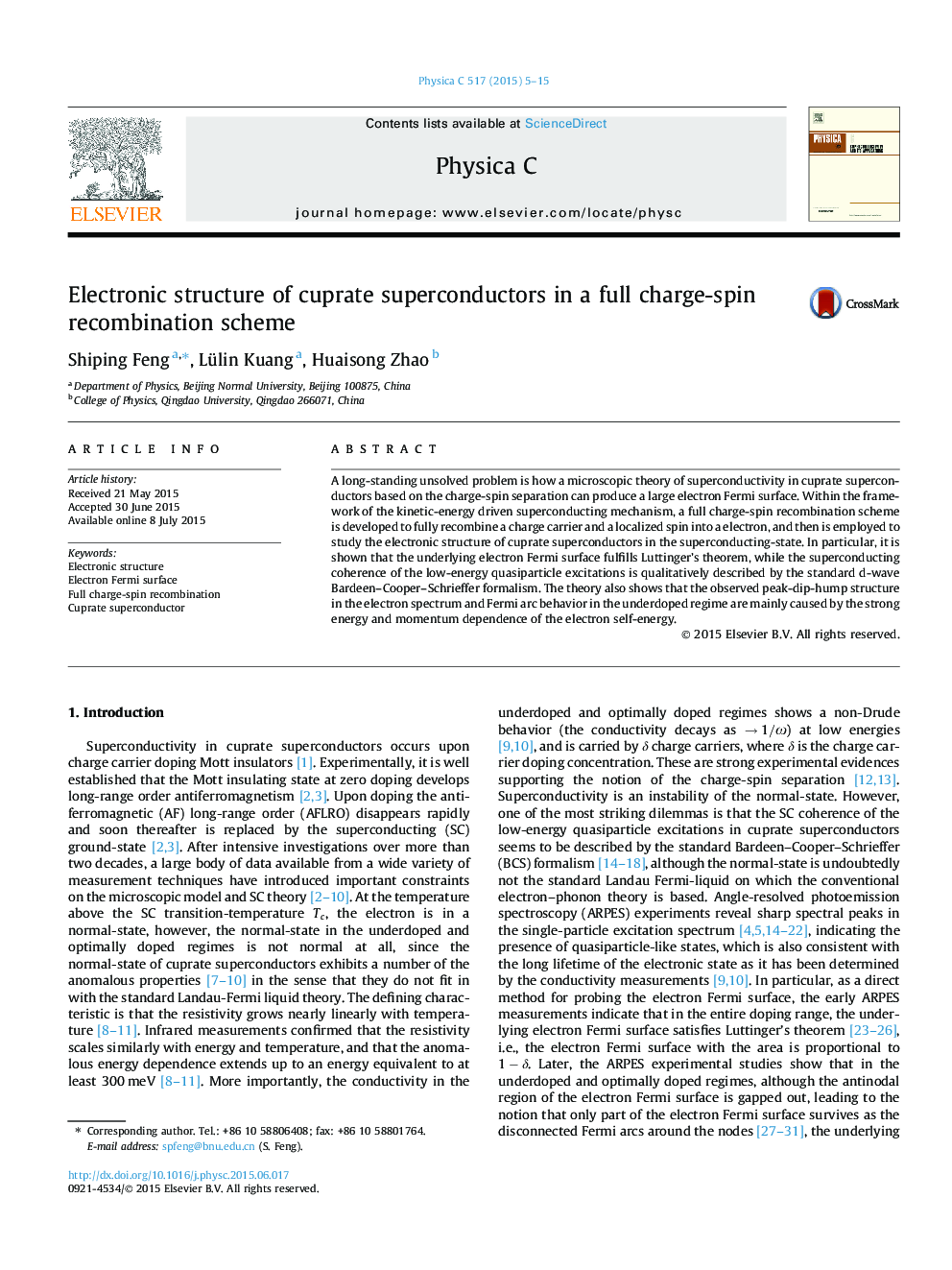| Article ID | Journal | Published Year | Pages | File Type |
|---|---|---|---|---|
| 1817580 | Physica C: Superconductivity and its Applications | 2015 | 11 Pages |
•We develope a full charge-spin recombination scheme in cuprate superconductors.•Electron self-energy from spin excitations is a key to electronic structure.•Underlying electron Fermi surface fulfills Luttinger’s theorem.•Low-energy excitation in superconducting-state is Bogoliubov quasiparticle.
A long-standing unsolved problem is how a microscopic theory of superconductivity in cuprate superconductors based on the charge-spin separation can produce a large electron Fermi surface. Within the framework of the kinetic-energy driven superconducting mechanism, a full charge-spin recombination scheme is developed to fully recombine a charge carrier and a localized spin into a electron, and then is employed to study the electronic structure of cuprate superconductors in the superconducting-state. In particular, it is shown that the underlying electron Fermi surface fulfills Luttinger’s theorem, while the superconducting coherence of the low-energy quasiparticle excitations is qualitatively described by the standard d-wave Bardeen–Cooper–Schrieffer formalism. The theory also shows that the observed peak-dip-hump structure in the electron spectrum and Fermi arc behavior in the underdoped regime are mainly caused by the strong energy and momentum dependence of the electron self-energy.
